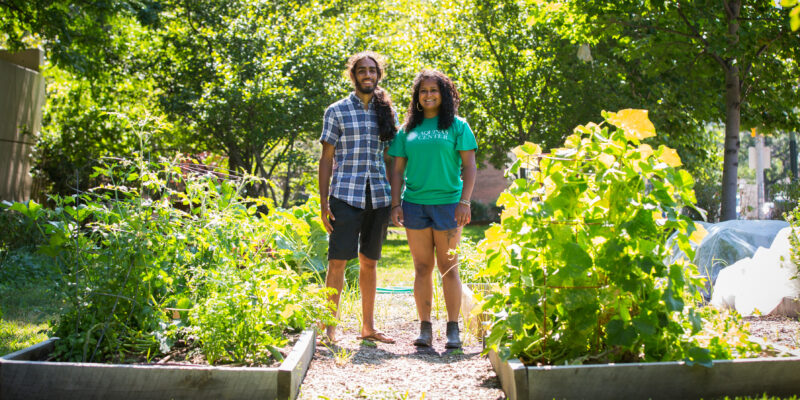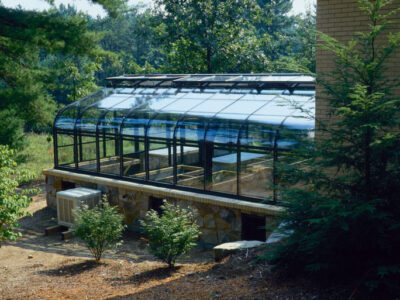Student-run gardens have become a growing trend in higher education institutions around the world. These gardens provide students with a unique learning experience that combines hands-on agriculture, environmental education, and community building. By actively participating in the cultivation of fruits, vegetables, and herbs, students gain valuable skills and knowledge that extend beyond the traditional classroom setting.
Benefits of student-run gardens
There are numerous benefits associated with student-run gardens in higher education. Firstly, these gardens promote sustainable practices by encouraging students to grow their own food using organic methods. This not only reduces the carbon footprint of the institution but also teaches students about the importance of sustainable agriculture.
Secondly, student-run gardens serve as a platform for experiential learning. Students have the opportunity to apply theoretical knowledge in a practical setting, gaining a deeper understanding of concepts related to plant biology, ecology, and nutrition. This hands-on experience enhances critical thinking and problem-solving skills, as students encounter real-world challenges such as pest control, soil management, and crop rotation.
Furthermore, student-run gardens foster a sense of community on campus. They provide a space where students, faculty, and staff can come together, collaborate, and share knowledge. The act of gardening itself promotes physical and mental well-being, as it offers a form of stress relief and a connection to nature. Of course, gardening takes time and some students may sooner or later think “can I pay to take my exam“. But for now, it’s very easy to fix if you do a little searching.
The history and growth of student-run gardens
The concept of student-run gardens in higher education can be traced back to the early 20th century when the first university gardens were established. These gardens were primarily used for research purposes and to support agricultural programs. However, over time, their focus shifted towards providing students with hands-on learning opportunities.
In recent years, the popularity of student-run gardens has grown significantly. Many universities now have dedicated spaces on campus where students can grow their own produce. These gardens are often managed by student organizations or clubs, with support from faculty and staff. As more institutions recognize the educational value of student-run gardens, their presence continues to expand.
Challenges faced by student-run gardens
While student-run gardens offer numerous benefits, they also face several challenges. One of the main challenges is the availability of suitable land on campus. Many universities have limited green spaces, making it difficult to allocate land for student-run gardens. Additionally, securing funding for initial setup and ongoing maintenance can be a hurdle.
Another challenge is the seasonal nature of gardening. Student-run gardens often face difficulties during winter months or in regions with extreme weather conditions. Maintaining the garden throughout the year requires careful planning and the use of innovative techniques such as greenhouses or indoor gardening.
Furthermore, managing the garden’s operations and organizing student involvement can be a logistical challenge. Students have busy schedules, and coordinating their participation in garden activities can be difficult. Additionally, ensuring continuity from one academic year to the next can be challenging as student leaders graduate and new students take their place.
Strategies for starting a student-run garden
Starting a student-run garden requires careful planning and coordination. Here are some strategies to consider:
- Identify available resources: Assess the available land, funding, and support from the university administration. Collaborate with other departments or organizations on campus that may have similar interests or resources.
- Form a student organization: Establish a student organization or club dedicated to managing the garden. This will help ensure continuity and provide a structure for student involvement.
- Develop a garden plan: Create a detailed plan that includes the layout of the garden, types of crops to be grown, and a schedule of planting and harvesting. Consider the specific needs of the campus community, such as dietary preferences or cultural significance of certain crops.
- Engage faculty and staff: Seek support and involvement from faculty and staff members who can provide guidance and expertise in relevant disciplines. This collaboration can enhance the educational value of the garden.
- Promote community involvement: Reach out to the campus community and local organizations to encourage involvement and support. This can include volunteer opportunities, workshops, or partnerships with local businesses.
- Implement sustainable practices: Emphasize organic gardening methods, composting, and water conservation techniques to promote sustainability. This will align the garden with the institution’s environmental goals.
Incorporating student-run gardens into the curriculum
Student-run gardens provide a unique opportunity to integrate gardening into the curriculum. Here are some ways to incorporate gardens into different academic disciplines:
- Biology and Environmental Science: Use the garden as a living laboratory to study plant biology, ecology, and environmental sustainability.
- Nutrition and Health Sciences: Connect the garden to courses that focus on nutrition, food systems, and culinary arts. Students can learn about the nutritional value of different crops and explore healthy cooking techniques.
- Education and Social Sciences: Use the garden as a platform for community outreach and service-learning projects. Students can develop educational programs for local schools or community organizations.
- Business and Marketing: Explore the entrepreneurial aspect of gardening by incorporating business and marketing principles. Students can learn about selling produce, creating value-added products, and developing marketing strategies.
By integrating gardens into various disciplines, students can experience a holistic approach to learning and gain a deeper understanding of the interconnectedness of different subjects.
Success stories from student-run gardens
Student-run gardens have had a significant impact on campuses across the globe. Here are a few success stories:
- University of California, Berkeley: The Berkeley Student Food Collective operates a garden on campus that supplies fresh produce to its grocery store and café. The garden serves as an educational space for students to learn about sustainable agriculture and food justice.
- University of British Columbia, Canada: The UBC Farm is a student-run farm that offers experiential learning opportunities in sustainable agriculture. It serves as a research facility, a community gathering space, and a source of fresh produce for the campus community.
- University of Melbourne, Australia: The Burnley Campus Student Gardens provide a space for students to learn about urban gardening and sustainable horticulture. The gardens are maintained by student volunteers and offer a tranquil environment for relaxation and reflection.
These success stories demonstrate the positive impact of student-run gardens on both the campus community and the broader society.
Resources and organizations supporting student-run gardens
Numerous resources and organizations provide support and guidance for those interested in starting or expanding student-run gardens. Here are a few notable ones:
- The Edible Schoolyard Project: This organization provides resources, curriculum materials, and training for schools interested in incorporating gardens into their educational programs.
- The Association for the Advancement of Sustainability in Higher Education (AASHE): AASHE offers resources, case studies, and networking opportunities for institutions aiming to develop sustainability-focused initiatives, including student-run gardens.
- The American Community Gardening Association (ACGA): ACGA provides guidance and support to individuals and organizations interested in community gardening, including student-run gardens.
These resources can offer valuable insights, best practices, and connections to a broader network of individuals passionate about student-run gardens.
The impact of student-run gardens on campus communities
Student-run gardens have a profound impact on campus communities. They foster a sense of community and collaboration among students, faculty, and staff. The gardens provide a space for cross-disciplinary learning and engagement, breaking down silos between different academic departments.
Moreover, the presence of student-run gardens promotes environmental awareness and sustainable practices within the campus community. Students become advocates for sustainable agriculture and can influence the larger institution to adopt more eco-friendly policies.
Conclusion
Student-run gardens in higher education have emerged as a powerful tool for experiential learning, community building, and environmental sustainability. These gardens provide students with invaluable hands-on experiences while promoting sustainable practices and fostering a sense of community on campus.
By overcoming challenges, implementing strategic approaches, and integrating gardens into the curriculum, higher education institutions can harness the immense educational potential of student-run gardens.
Whether it’s cultivating crops, connecting with nature, or advocating for sustainability, student-run gardens have the power to transform the educational landscape and enrich the lives of students, faculty, and staff.










Comments